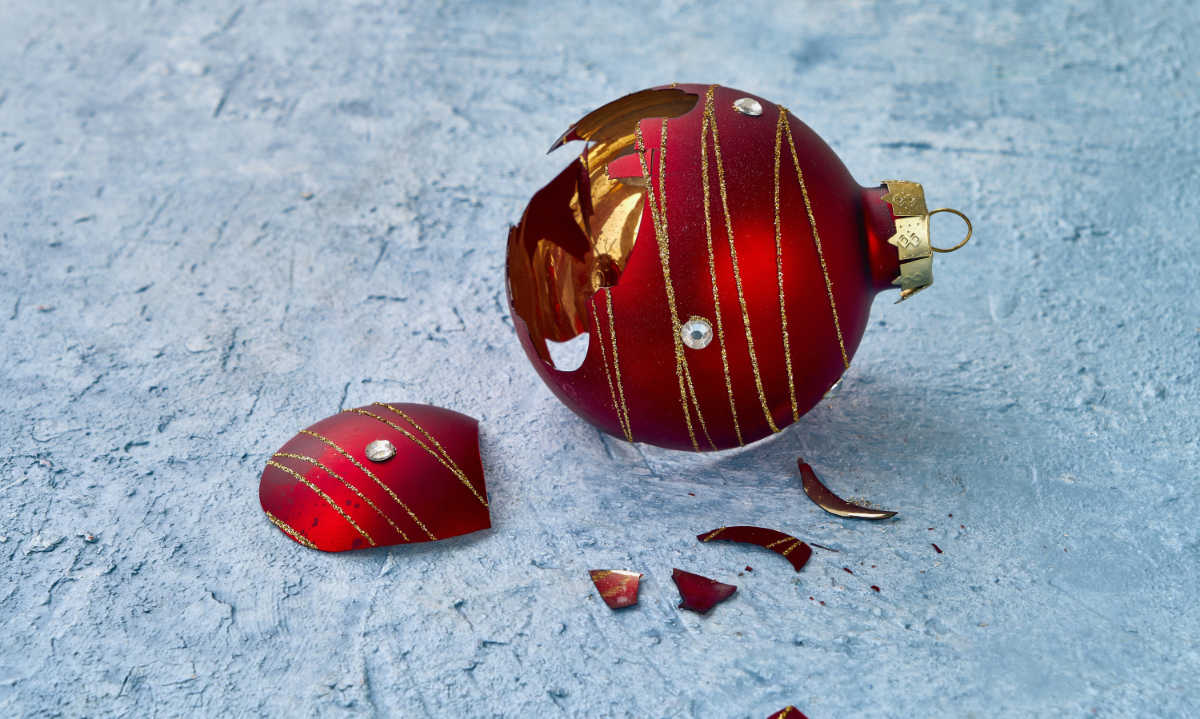Burns, falls and choking can all be common at Christmas – here’s what the experts want us all to know when dealing with accidents at Christmas.
Accidents at Christmas – how to treat at home
Scattered presents, new toys for the grandkids, busy kitchens and hordes of people crowded into a small space mean that as well as being chaotic fun, Christmas can be full of accidents waiting to happen. Ensuring safety and first aid at home over the festive season should be on your to-do list.
Every December, many A&E patients have to endure delays or are even diverted elsewhere due to increased demand – some caused by Christmas accidents that could have been treated at home (although, of course, there are certain scenarios that absolutely require a prompt 999 call or trip to hospital).
How to ensure safety and first aid at home
But what can we sensibly manage at home? And when is an urgent visit to A&E called for? To help inform families, and reduce pressure on both hospitals and GPs over the festive period, St John Ambulance is encouraging people to equip themselves with the skills to help treat common festive mishaps and minor injuries at home.
Christmas can be an exceptionally busy time for our Community First Responders. Help them to be there for everyone who needs them this festive season by making an online donation via the @BigGive #ChristmasChallenge18. Whatever you give will be doubled! https://t.co/fhPGE3D5Wp pic.twitter.com/cYAgcBwlYL
— St John Ambulance (@stjohnambulance) November 27, 2018
Alan Weir, head of clinical operations at St John Ambulance, says: “At a time when there’s increasing pressure on our emergency services, knowing basic first aid is vital. It means minor injuries can be dealt with at home, reducing the need for health professionals to step in unnecessarily for minor ailments.
Stock up on first aid for potential accidents at Christmas
“No one wants to end up in hospital during the Christmas period. With GP surgeries either closed, open at limited times, or working with reduced staff, we’re urging everyone to be prepared, stock up on essentials like plasters and indigestion remedies, and use first aid as the first port of call.
“Equipping yourself with these skills can help you identify when to seek medical attention, ensuring healthcare professionals’ time is used for life-threatening emergencies and that you’re back enjoying the festivities quickly.”
And GP Dr Tom York, of the doctor-on-demand app GPDQ, adds: “The general chaos of the Christmas holidays can create a range of hazards and consequently, injury rates over this period often increase. Extra safety precautions and vigilance is the best way to avoid an accident spoiling the festive period, not to mention your wellbeing.”
Read Wise Living’s 12 mental and physical Christmas wellbeing tips for surviving the festive season.
6 common accidents at Christmas – and what you can do
Here are six common Christmas injuries and mishaps, with key tips from St John Ambulance and Dr York on how to treat them at home if possible, and when to call in urgent help…
1. Cuts and grazes
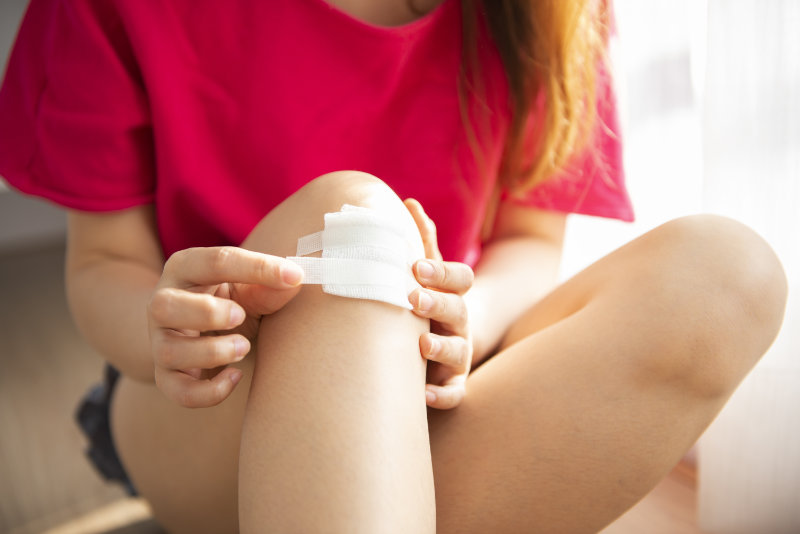
A slip of the knife while preparing Christmas dinner could leave you with a cut finger, or worse.
What to do: If the wound is dirty, clean it with cold running water or alcohol-free wipes and pat it dry. Raise and support the injury, and apply a sterile adhesive dressing. Obviously, it there is heavy bleeding that doesn’t very quickly stop, and the cut is large and requires stitches, seek help.
2. Burns and scalds
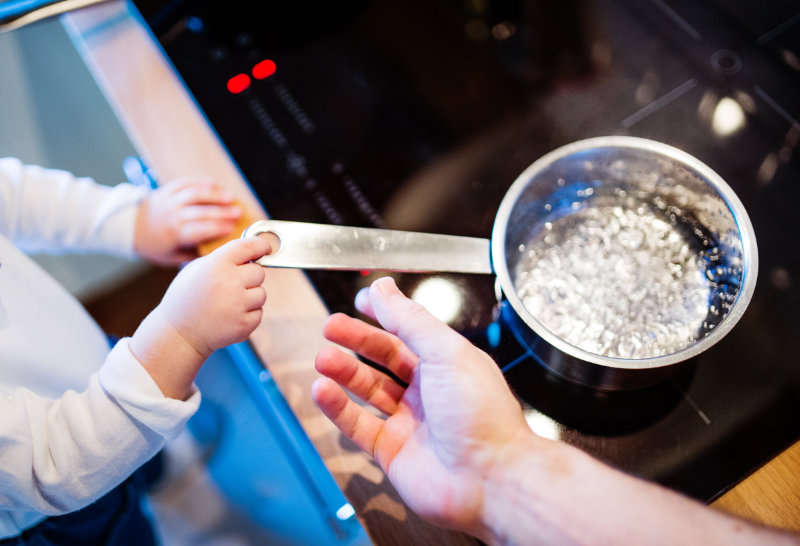
Hot oil jumping out of the pan while checking the roast potatoes, or a steaming cup of tea pulled off the coffee table by a child can easily cause minor burns or scalds.
What to do: Hold the burn under cool running water for at least 10 minutes, remove clothing or jewellery around the burn (unless it’s stuck to it – in which case do not attempt to pull as you may tear skin), cover lengthways with cling film, and monitor. Seek medical advice, for example by calling NHS 111, if the burn is a bad one (and obviously, be extra cautious if infants and young children get burned and seek advice).
Jo received the reassurance and advice she needed from NHS111 to ensure her daughter could get the care she needed.
If you have an urgent medical need, but it’s not an emergency, #HelpUsHelpYou and call 111. #WednesdayWisdom pic.twitter.com/ADt1GiEZDs
— London Ambulance (@Ldn_Ambulance) November 7, 2018
3. Sprains and strains
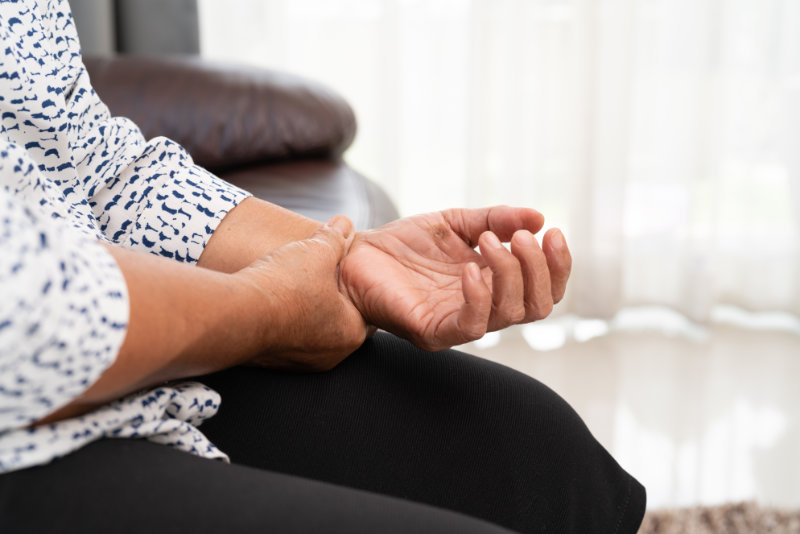
With presents and toys scattered everywhere on Christmas Day, it’s easy to trip over and sprain your ankle.
What to do: Remember the ‘RICE’ rule.
- R – rest the injured area.
- I – apply an ice pack or frozen peas wrapped in a tea towel.
- C – ensure there’s comfortable support and check circulation every 10 minutes.
- E – elevate the injured limb and rest.
4. Children’s head injuries
Toppling Christmas trees, heavy stacked presents, or children tearing up and downstairs in excitement can all result in head injuries, which may require medical treatment. This is especially true for visiting grandkids, as your home might not be fully kid proofed.
What to do: Very minor bumps and bruises are common, but the general rule of thumb is don’t take any chances. If your child suffers a head injury, you must see a doctor urgently, advises York. If the child has any loss of consciousness, vomits more than once, is difficult to console or to wake up, or is behaving abnormally (e.g. not walking or talking as usual), it could indicate an injury to the brain and require prompt assessment by a doctor.
5. Poisoning
We’re not talking about the Christmas dinner here! There are more than 28,000 cases of children requiring treatment for poisoning per year in the UK, and Christmas brings additional dangers – such as a medication lying around, youngsters eating Christmas gifts such as cosmetics, or drinking colourful alcoholic drinks.
What to do: “Keeping these things out of reach is essential,” says York, “but if you witness a child ingesting something harmful, the first thing to do is to encourage them to spit it out.”
If you don’t see a child drinking or eating something dangerous, but notice possible poisoning symptoms – such as vomiting, agitation, difficulty breathing, seizures or drowsiness – try to find out what’s been consumed, how much of it and when, but don’t let getting the information delay you from seeking immediate medical assistance.
6. Choking
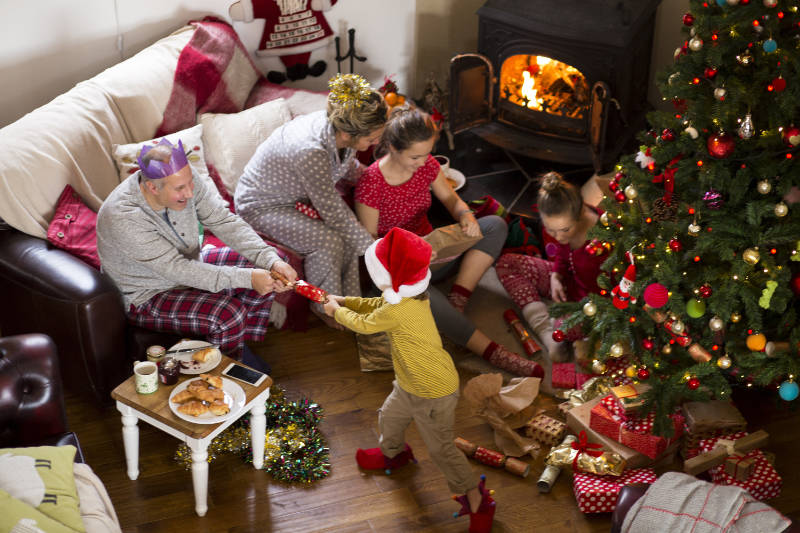
Festive nuts or some of that Christmas turkey can get stuck in the throat, obstructing the airway – and there are even more choking hazards around for children at Christmas
“Stray sweets, nuts and fruit, as well as decorations, small cracker toys and plastic packaging, could find themselves within arm’s reach and pose a hazard for adventurous toddlers,” warns York. “Batteries can be especially problematic as aside from choking, they can also cause chemical burns in the throat when saliva creates an electrical current.”
What do to: Adults and children should try to cough out whatever they’re choking on. St John Ambulance says onlookers should encourage the casualty to keep coughing, and if that doesn’t dislodge the obstruction, give five sharp back blows between the shoulder blade, and check their mouth each time. Or, squeeze it out by giving five abdominal thrusts and checking their mouth each time.
But remember, call 999 for emergency help if the object doesn’t dislodge, as choking can quickly become a medical emergency. Repeat the back blows and squeezes until help arrives.
For more information and advice, visit www.sja.org.uk
Read Wise Living’s Christmas home security tips – 12 ways to deter burglars this festive season.























































